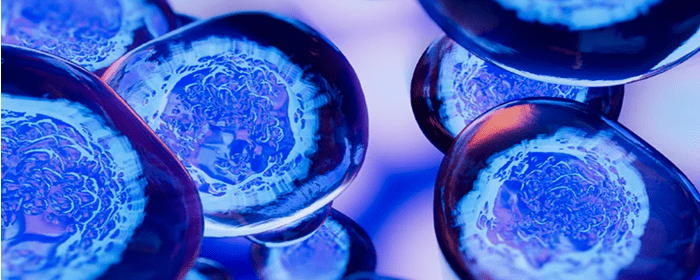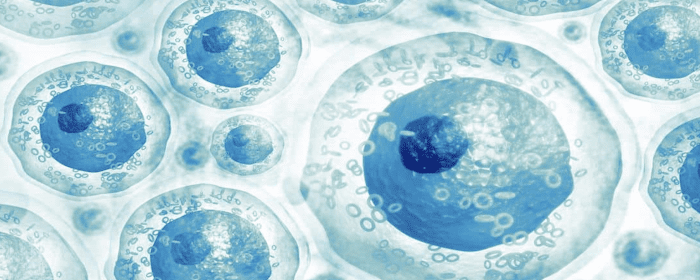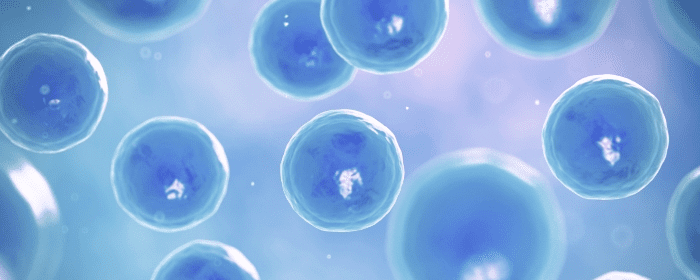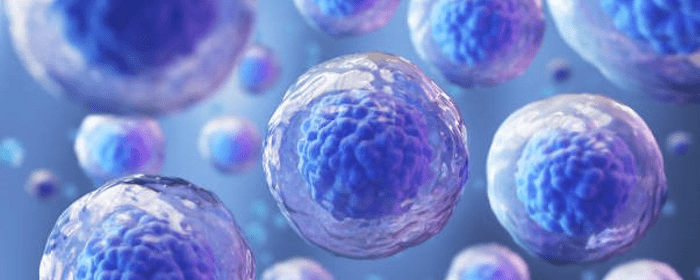
by admin | Sep 6, 2023 | Multiple Sclerosis, Mesenchymal Stem Cells, Regenerative Medicine, Stem Cell Research, Stem Cell Therapy
Multiple sclerosis (MS) is a progressive auto-immune disease that affects the central nervous system (CNS). Currently, it is estimated that nearly 2 million people worldwide are affected by MS.
Characterized by the body attacking the myelin (the protective sheath that covers the nerve fibers), MS causes communication issues between the brain and the rest of the body. As the nerves continue to deteriorate, the condition can cause permanent damage.
Currently, there is no pharmaceutical treatment for MS, only medications that treat the symptoms of the condition.
In the field of regenerative medicine, mesenchymal stem cells (MSCs) have emerged as a candidate that could potentially treat a number of diseases, including MS. Specifically, MSCs have anti-inflammatory effects and have demonstrated the ability to differentiate in order to target the overactivity and self-antigen attacks observed in the development and progression of MS.
As part of this review, Alanazi et al. reviewed a number of clinical trials that have utilized MSCs isolated from a variety of sources, including peripheral blood, bone marrow (BM-MSCs), adipose tissue (AD-MSCs), umbilical cord (UCMSCs), and the placenta, in order to better understand their potential as a treatment option for MS.
An analysis of these clinical trials led the authors of this review to the consensus that MSCs appear effective in inhibiting CD4+ and CD8+ T cell activation, T regulatory cells, and macrophage switch into the auto-immune phenotype.
Further analysis of the specific MSCs used to treat MS by Alanazi et al. indicates that while BM-MSCs, AD-MSCs, and UCMSCs all demonstrate beneficial effects when applied to the treatment of MS, UCMSCs appear to be the best option.
According to the authors, UCMSCs demonstrate faster self-renewal than other MSCs, are able to differentiate into three germ layers, and can accumulate in damaged tissue or inflamed areas. Additionally, UCMSCs are also among the easiest MSCs to source, demonstrate a high concentration of MSCs, are safe and inexpensive, and are not associated with ethical issues.
Based on the information reviewed, Alanazi et al. recommend emphasizing the clinical utility of UCMSCs for regenerative medicine and immunotherapy, including for the treatment of MS.
Source: “Mesenchymal stem cell therapy: A review of clinical trials for multiple ….” 23 Aug. 2022, https://www.ncbi.nlm.nih.gov/pmc/articles/PMC9420954/.

by admin | Aug 9, 2023 | Mesenchymal Stem Cells, Stem Cell Therapy, Wharton's Jelly
Human umbilical cord Wharton’s Jelly derived mesenchymal stem cells (WJ-MSCs) are reported as the most potent cell source of MSCs, however, they remain understudied in comparison to other autologous sources of MSCs.
Mehling et al.’s study aimed to evaluate the safety of WJ-MSC therapy for a range of conditions and administration routines, including intravenous, intrathecal, and intra-articular delivery.
Wharton’s jelly (WJ) is the mucoid connective tissue that surrounds the vessels in the human umbilical cord and provides protection from compression and torsion in response to fetal movement.
According to this study, the use of WJ-MSCs has many advantages over autologous MSCs, including circumventing the pain and healing process of invasive stem cell harvesting from a patient. Additionally, WJ-MSCs offer the highest level of potency for therapeutic benefit and exhibit increased proliferation ability and anti-inflammatory effects.
Additionally, WJ-MSCs have been demonstrated to be safe and effective for many conditions. WJ-MSCs also do not cause or contribute to infusion-related toxicity, treatment-related adverse events, or ectopic tissue formation, even when administered at high dosages.
In this study, Mehling et al. confirm the safety of human allogeneic WJ-MSCs delivered at high doses and through multiple delivery routes (including intravenous (IV), intrathecal (IT), and Intraarticular (IA)).
Specifically, as part of this study, 22 subjects were evaluated for adverse events (AEs) for a period of 6 months following treatments with WJ-MSCs for a range of conditions, including neurological and osteoarthritic indications.
At the conclusion of the 6-month period of evaluation, the study reported an AE rate of 9.3% (3 subjects from the 32 doses administered in this study). The reported AEs consisted of chills and headaches, both transient and mild, and resolving without concern. While both of these AEs (headache and chills) are relatively common reactions to cell administration, 1 of the 3 AEs was deemed related to the administration procedure.
Additionally, blood profiling of 75 markers for health and disease in the subjects of this study demonstrated that WJ-MSC treatment poses no hematological safety concerns.
Considering the minimal occurrences of AEs observed following WJ-MSC therapy administered during this study, the authors support the use of WJ-MSC therapy for various indications in future clinical studies.
Source: “Safety study of cultured human Wharton’s Jelly mesenchymal stem ….” https://www.cellr4.org/wp-content/uploads/sites/2/2022/10/e3332.pdf.

by admin | Aug 2, 2023 | Mesenchymal Stem Cells, Regenerative Medicine, Stem Cell Therapy
Because of its ability to simultaneously activate multiple mechanisms, including paracrine, trophic, immunomodulatory, and differentiation, researchers consider mesenchymal stem cells to be an effective option for stem cell therapy.
After years of active research, bone marrow-derived MSCs (BM-MSCs) have been a prevalent source for MSC-based studies. There is also active research using MSCs from a variety of other sources, including adipose tissue, peripheral and umbilical cord blood, amniotic fluid, skin, dental pulp, synovium, umbilical cord tissue, placental complex, and endometrium.
As part of this review, Arutyunyan et al. review umbilical cord-derived MSCs (UC-MSCs) as a prospective source for MSC-based therapy. More specifically, the authors focus on the potential therapeutic benefits of Wharton’s jelly, the gelatinous substance found in the umbilical cord stroma; of particular interest to researchers is the presence of mesenchymal-derived cells, including stem cells, with the absence of capillaries.
When studied in vitro, researchers found UC-MSCs demonstrated the ability to differentiate into a wide range of cells, including chondrocytes, adipocytes, osteoblasts, odontoblast-like cells, dermal fibroblasts, smooth muscle cells, and somatostatin-producing cells, sweat gland cells, endothelial cells, neuroglia cells, and dopaminergic neurons.
While it’s well known that MSCs produce a variety of bioactive compounds that supply a paracrine mechanism for their therapeutic activity, researchers have learned that UC-MSCs secretomes differ significantly from MSCs from bone marrow and adipose. Specifically, the most significant difference is UC-MSCs’ nearly complete absence of synthesis of the main proangiogenic factor, VEGF-A. UC-MSCs also demonstrate increased production of antiangiogenic factors when compared to BM-MSCs and AT-MSCs.
UC-MSCs have recently demonstrated the ability to transfer their own mitochondria into mitochondrial DNA-depleted cells. This observation has broad implications for the therapeutic potential of UC-MSCs, primarily due to the failure of mitochondria as an initial event in many diseases. In this regard, the authors conclude that the transfer of mitochondria provides a rationale for the therapeutic use of UC-MSCs for ischemic injury or disease linked to mitochondrial dysfunction.
Arutyunyan et al. found recent animal model preclinical studies regarding the use of UC-MSCs for the treatment of different diseases demonstrated promising results. Additionally, clinical studies involving UC-MSCs demonstrated to be safe with no significant side effects other than fever.
While the authors point out concern with the lack of standardized protocols for the isolation and expansion of UC-MSCs and of uniform requirements for the final product. Despite these concerns, the authors also conclude that the results of clinical trials using UC-MSCs are encouraging, particularly for the treatment of autoimmune and endocrine diseases.
Source: “Umbilical Cord as Prospective Source for Mesenchymal Stem Cell ….” 29 Aug. 2016, https://www.hindawi.com/journals/sci/2016/6901286/.

by Stemedix | Jul 28, 2023 | Mesenchymal Stem Cells, Crohn's Disease, Stem Cell Therapy
According to the CDC, an estimated 3.1 million adults (1.3%) in the United States have been diagnosed with inflammatory bowel disease (IBD), which includes Crohn’s disease (CD) and ulcerative colitis.
Characterized by abdominal pain, severe diarrhea, fatigue, weight loss, and malnutrition, CD is thought to be the result of swelling and inflammation of the tissue of the digestive tract.
To date, there is not a clearly prescribed method for the treatment or prevention of CD. However, recently, researchers have found stem cells to be a promising treatment option, primarily for the observed ability to regulate immunity, repair injury, and control inflammation.
Building on the positive findings of previous studies that have used autologous stem cells or adipose-derived stem cells to treat CD and its associated complications, Zhang et al.’s randomized controlled clinical trial examines the use of umbilical cord mesenchymal stem cells (UC-MSCs) as a treatment for CD.
This study followed 82 patients who had been diagnosed with CD and had received steroid maintenance therapy for more than 6 months. Half of the participants were randomly assigned to receive a series of four peripheral intravenous infusions of UC-MCSs/kg administered over the course of a four-week period. Then, by using the Crohn’s disease activity index (CDAI) Harvey-Bradshaw Index (HBI), and corticosteroid dosage, participants in both the control and experimental group were followed up with over a 12-month period.
At the conclusion of this study, Zhang et al. found that the group receiving umbilical cord mesenchymal stem cells infusion experienced a significant decrease in the required dosage of corticosteroid dosage and a significant improvement in the overall condition of the patients. These findings led the authors to conclude that UC-MSCs can attenuate immune malfunction in patients with CD. Considering these findings, the authors suggest that the mechanisms of UC-MSC efficacy in CD be elucidated to better understand the precise selection of patients who receive this specific stem-cell treatment in the future.
The authors point out that, while the specific mechanisms of alleviating CD by UC-MSCs remain obscure, it is suggested that the downregulation of proinflammatory cytokines serves a beneficial role in the process.
The authors also raise concerns over the safety of the clinical application of stem cells in this application, highlighting conflicting findings as to the safety of the process. Considering the prevalence of stem cells’ ability to regulate and suppress immunity in other studies, Zhang et al. infer that the patient infections observed during their trial were associated with immunosuppression by stem cells.
While the study suggested that the peripheral infusion of UC-MSCs was convenient and safe, the authors point out that there was little distribution of UC-MSCs in the intestinal tissue and risk of cells being retained in the pulmonary capillaries. As a result, the authors call for future studies comparing the efficacy of interventional infusion into the inferior mesenteric artery to that of peripheral infusion. To know more about mesenchymal stem cell treatment for Crohn’s disease visit Stemedix website and read more related article.

by admin | Jul 26, 2023 | Mesenchymal Stem Cells, Extracellular Vesicles, Regenerative Medicine, Stem Cell Therapy
Researchers continue to tout the potential of mesenchymal stem cells (MSCs) as an evolving approach for the repair of damaged tissue or lost cells.
Specifically, the ability of MSCs to differentiate and secrete beneficial factors and vesicles is believed to play the most influential role in the regeneration of injured tissues and cells affected by various diseases.
Recently, research into the regenerative potential of MSCs has focused on the extracellular vesicles (EVs) secreted by MSCs as an emerging and potential non-cellular therapeutic approach for healing or repairing injured or damaged tissue.
MSC-derived EVs (MSC-EVs), or cell-free therapies, in contrast to treatments based on whole cells, are easier to manage and safer due to lower amounts of membrane-bound proteins such as MHC molecules and their inability to directly form tumors.
In this review, Keshtkar et al. discuss and describe the extracellular vesicles released by MSCs and their therapeutic potential for addressing different disease models.
These EVs are membrane-packed vesicles that are secreted by a variety of cell types and found in a variety of physiological fluids. In addition to MSCs, EVs are also secreted by T cells, B cells, dendritic cells, platelets, mast cells, epithelial cells, endothelial cells, neuronal cells, cancerous cells, and embryonic cells. EVs are also found in urine, blood, breast milk, saliva, cerebrospinal fluid, synovial fluid, and amniotic fluid.
EVs have repeatedly demonstrated that they perform an important role in cell-to-cell communication and have been implicated in a number of important processes, including the immune response, homeostasis maintenance, coagulation, and inflammation.
Several studies have explored the use of MSC- EVs as therapeutic treatment options for kidney disease, liver disease, cardiovascular disease, and neurological disease. The authors of this review report the beneficial therapeutic effects of MSC-EVs in each of the disease models listed above, which include a significant reduction in inflammation, improved angiogenesis, reduced oxidative stress, the suppression of fibrosis, and increased cell proliferation.
Keshtkar et al. conclude that EVs can be easily isolated from MSCs of various origins and can be transferred to target cells to introduce therapeutic effects that include the regeneration of tissue and suppression of inflammation. Additionally, the authors point out that EVs could be an effective, safe therapeutic option.
Considering the potential therapeutic benefits of MSC-EV regenerative therapy, the authors suggest standardizing methods for EV isolation, characterization, and administration as ways to provide safe, effective, and powerful new therapies based on MSC-EVs.
Source: “Mesenchymal stem cell-derived extracellular vesicles – NCBI.” 9 Mar. 2018, https://www.ncbi.nlm.nih.gov/pmc/articles/PMC5845209/.






 St. Petersburg, Florida
St. Petersburg, Florida
